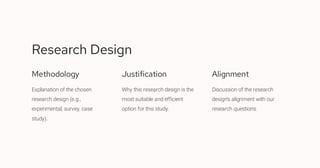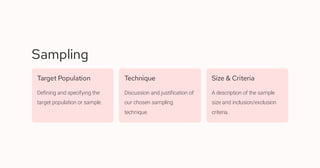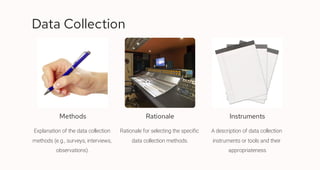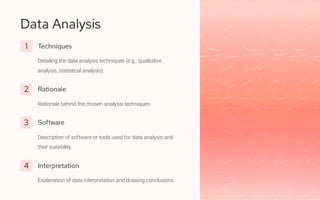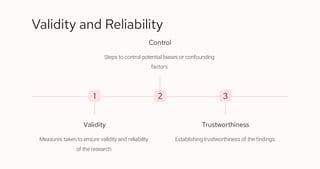MODULE II RESEARCH PLAN.pdf
- 1. Introduction Exploring the significance of our research topic, and presenting our research objectives. by Elims Principal
- 2. Research Design Methodology Explanation of the chosen research design (e.g., experimental, survey, case study). Justification Why this research design is the most suitable and efficient option for this study. Alignment Discussion of the research design's alignment with our research questions.
- 3. Sampling Target Population Defining and specifying the target population or sample. Technique Discussion and justification of our chosen sampling technique. Size & Criteria A description of the sample size and inclusion/exclusion criteria.
- 4. Data Collection Methods Explanation of the data collection methods (e.g., surveys, interviews, observations). Rationale Rationale for selecting the specific data collection methods. Instruments A description of data collection instruments or tools and their appropriateness
- 5. Data Analysis 1 Techniques Detailing the data analysis techniques (e.g., qualitative analysis, statistical analysis). 2 Rationale Rationale behind the chosen analysis techniques. 3 Software Description of software or tools used for data analysis and their suitability. 4 Interpretation Explanation of data interpretation and drawing conclusions.
- 6. Validity and Reliability 1 Validity Measures taken to ensure validity and reliability of the research. 2 Control Steps to control potential biases or confounding factors. 3 Trustworthiness Establishing trustworthiness of the findings.
- 7. Limitations Identification Identification and acknowledgment of potential limitations or constraints Mitigation Strategies to mitigate or address these limitations.
- 8. Timeline Data Collection Estimated timeframes for data collection. Data Analysis Estimated timeframes for data analysis. Report Writing Estimated timeframes for report writing.
- 9. Conclusion Key Points Summary of key points in the research plan. Emphasis on research methodology. Relevance Emphasizing the importance and relevance of the chosen methodology. Outcomes Highlighting expected outcomes and potential contributions of the research.


